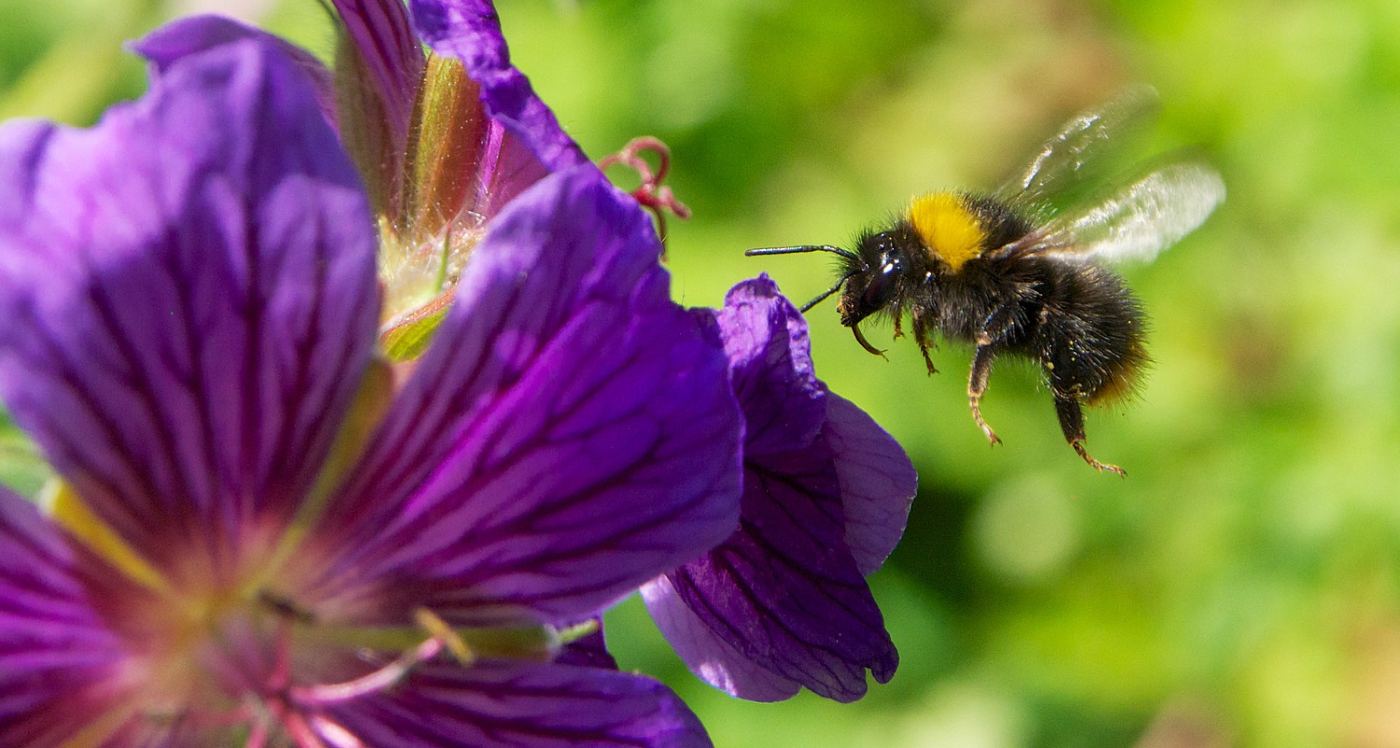
This is actually unexpected and important. The mere presence of a bee hive will therefore encourage early blossoming and that is really important economically. Better yet this likely also will precipatate a fuller fruit set surely. Who would have ever guessed.
It also confirms the importance of maintaing beehives as a matter of the course around our fields and crops along with ample wild fence rows loaded with a full range of plants.
The wild fence rows also provide ample habitat for all the other wild pollinators. All this also explains why certain plants explode into productive lif in a row crop. The bees did it.
.
Bees Actually Bite Plants to Make Them Flower Early – Surprising Scientists
By Andy Corbley
-Jun 2, 2021
Sputniktilt, CC license
https://www.goodnewsnetwork.org/bees-bite-leaves-to-encourage-flower-growth/
Despite their name, there’s no bumbling in a bumblebee’s movements. They are busy surveying your yard for the tastiest and richest supplies of nectar and pollen.
They’re also biting tiny chunks out of leaves as they go along, but are neither ingesting nor bringing the leaf fragments back to the hive. Instead, like so many gardeners with their pruning sheers, the bees are manipulating flowers into blooming earlier than normal, a discovery that has scientists buzzing.
Between the time of their emergence and the month of April when flowers are plentiful, buff-tailed bumblebees in a Swiss research lab were observed over several trials to prune the leaves of preferred plants while not in flower when the bee colony had been deprived of pollen. This was in contrast to the actions, both in the lab and on the building’s rooftop, of another colony that was not pollen-deprived.
Additionally, they had a profound effect on the plants they pruned. Their nibbling enticed flowers out of a tomato plant a whole month early, and black mustard plants two weeks early.
Continuing their rooftop research, the Swiss beekeeper/scientists found that over the course of early summer, wild bees of two other species began visiting and puncturing the leaves on non-flowering patches of plants.
A good sign and a fair bargain
Such a profound development in our understanding of a well researched insect is exciting, and a collection of biologists had a lot to say to National Geographic about the finding.
Some suggest it was an exceptional display of communication between not just different species, but different kingdoms, as the biting of the leaves might be the bee’s way of alerting the flower to its need for food and offering its services as a pollinator in return.
The question of why biting, and what is the mechanism that translates the sensation into early flowering, are still open to debate. The Swiss researchers punctured the leaves of their plants with tiny razor blades shaped like the bee-made puncture marks, and while this caused the plant to flower earlier, it didn’t happen as fast as when the bees made the marks.
This suggests there could be another piece of biological equipment the bees have that works in tandem with their mandibles, perhaps an odor or scent gland. If that mechanism could be figured out, it could be the largest development in agriculture since nitrogen fertilizer, as farmers would be able to fit a lot more into a single season, and for those maintaining orchards, control when bees visit for pollination.
Another hypothesis that has developed in the wake of the discovery is that if plant species change their flowering patterns in the effects of a changing climate, bees may still have the ability to manipulate their preferred plants into producing flowers in time to prevent starvation.
Neal Williams, a bee biologist at UC Davis, commented how wonderful it was that even in the year 2021, such a large discovery can simply come from observing an animal in its day-to-day activities.
No comments:
Post a Comment